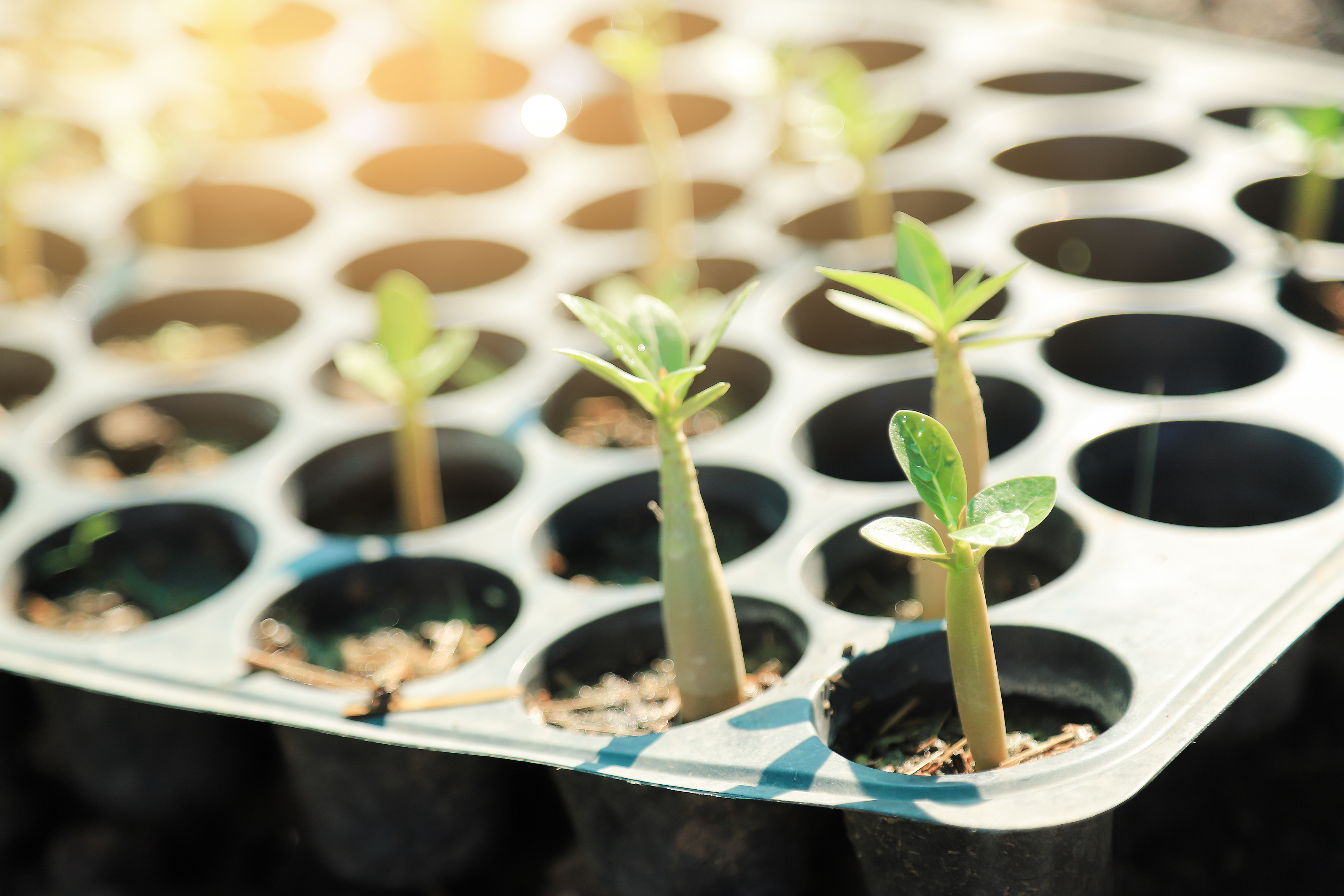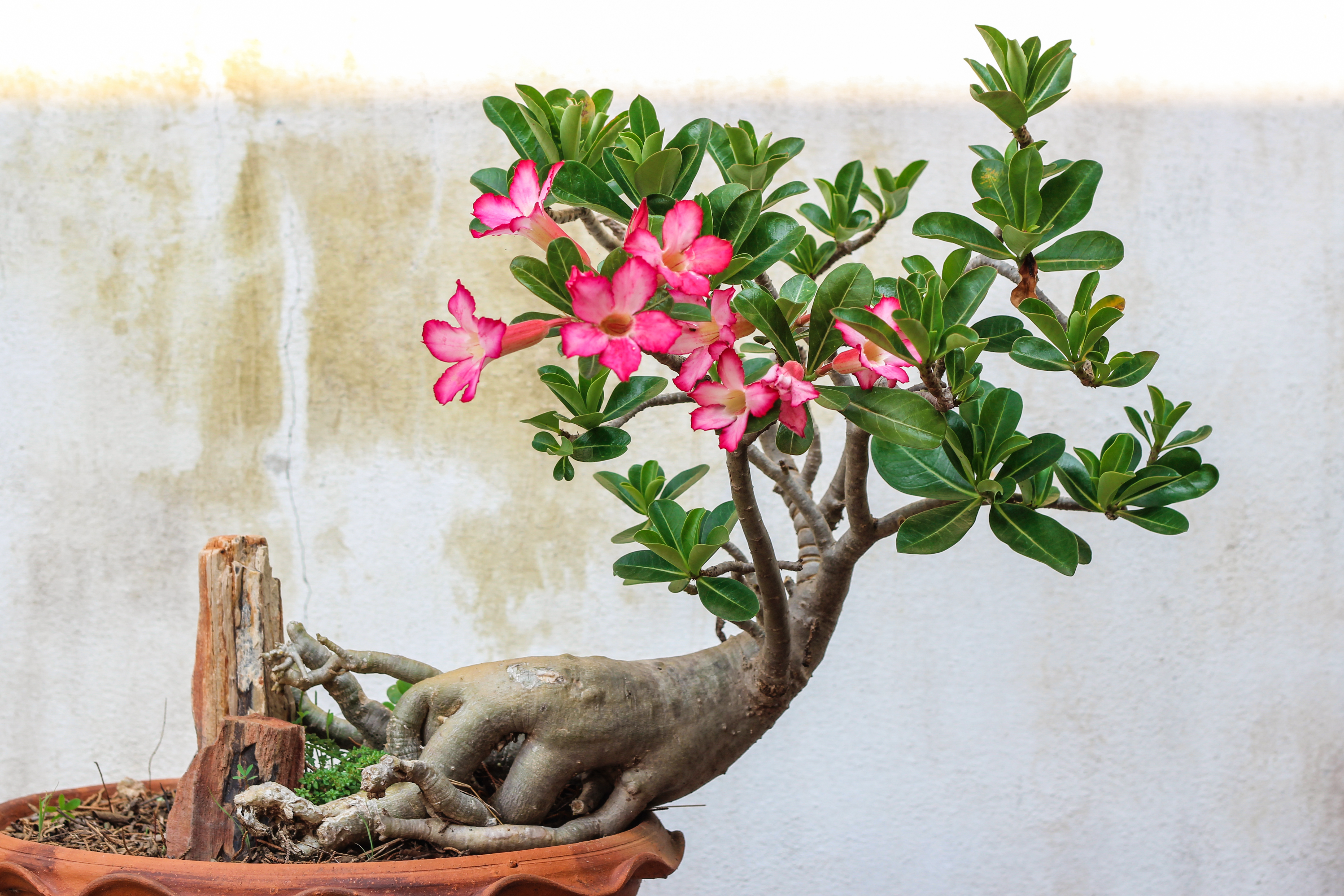Origin
Adenium obesum, also known as the desert rose, is native to regions in eastern and southern Africa, as well as the Arabian Peninsula. It is a popular ornamental plant and has been widely cultivated in other parts of the world for its showy flowers and unique, thickened stem base.

Care
Adenium obesum is a relatively easy plant to care for. It can handle bright sunlight so if placed indoors then place it in a really sunny window. It's also drought-tolerant and can handle really hot temperatures (ideally between 65-95°F / 18-35°C). So just keep it away from too much water and cold temperatures and it should probably be fine.
Looking for an eye catcher? The desert rose will charm almost any one with its thick stem and bright flowers.

Other
Adenium obesum is a member of the Apocynaceae family, which includes other ornamental plants such as oleanders and frangipanis. Desert roses are resistant to many pests and diseases, but can be susceptible to mealybugs and spider mites. Watch out for signs of infestation, such as small, white cottony masses or webs and if needed: use Dr. Planta for help.
The flowers of Desert rosse can come in a variety of colors including pink, red, white and bi-colors.
The common name "desert rose" comes from the plant's ability to survive in arid conditions, as well as its shapely, thickened stem base, which is thought to resemble the shape of a rose.

How to propagate your desert rose
There are several ways to propagate the Desert rose, including seed, stem cuttings, and air layering.
Seed: Desert rose seeds can be planted in a well-draining potting mix and covered with a thin layer of sand or vermiculite. Keep the soil moist and place the pot in a warm, sunny location. Germination usually occurs within two to four weeks.
Stem cuttings: Stem cuttings can be taken during the growing season, typically in late spring or early summer. Cut a stem just below a node (where leaves are attached) and remove the leaves from the bottom half. Dip the cut end in rooting hormone and plant in a well-draining potting mix or sandy soil. Keep the soil moist and place the pot in a warm, sunny location. Roots should form in about four to six weeks.
Air layering: Air layering is a propagation method that can be used to root a mature plant. Start by selecting a healthy, mature stem and make a small wound around it using a knife or pruner. Cover the wound with rooting hormone and wrap it in plastic wrap or sphagnum moss and tie it off tightly. Leave the air-layered stem intact with the parent plant and wait for roots to form. This process can take about 3-4 weeks to several months depending on the conditions. Once roots have formed, cut the stem below the new roots and plant it in a separate container.
Regardless of the method you choose, it's important to provide your new desert rose plants with bright, indirect light and to keep the soil consistently moist but not waterlogged. Be patient, as it can take several months for new plants to establish and begin growing on their own.